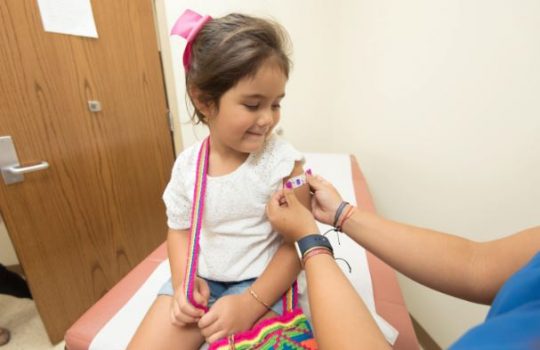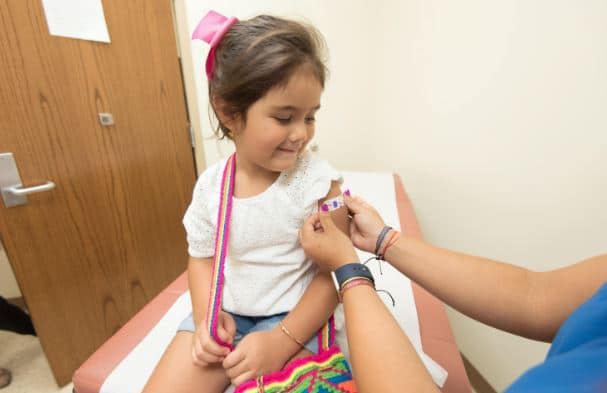 Our Presidential Candidates Must Address Child Wellbeing & Poverty in Tonight’s Debate
Our Presidential Candidates Must Address Child Wellbeing & Poverty in Tonight’s Debate
September 29, 2020
By Tracy Nájera, Executive Director
The presidential debates begin in Cleveland, Ohio, a city that is now ranked number one in poverty according to a recent report released by the U.S. Census Bureau. The fact that it’s being hosted in Cleveland presents an opportunity to examine each candidate’s ideas, proposals, commitment, and understanding of the challenges facing so many people across the U.S., in Ohio, in Cleveland.
For many in our country, access to health care, education, economic opportunity, housing quality, and fresh food is a function of where we live and our economic status. Too often, and as a result of institutional racism imbedded in generations of policies such as “red-lining”, this means that availability of opportunity also intersects with race and ethnicity. These are serious issues that Ohio and many other states must address; however, to address them means to face uncomfortable truths and be deliberate in implementing anti-racist policies so that all children have the opportunities to thrive and flourish into adulthood.
The following are a series of issues facing Ohio and questions that we challenge our presidential candidates to answer directly and share their vision and commitment for our children’s future.
Health Equity & Race Disparities
Health equity is a major issue in Ohio and in many other parts of the country. Health disparities begin prenatally, and the existence of these disparities from even before birth give pivotal insight into how well our society treats the most vulnerable among us. Even before the devastating and disproportionate impacts of COVID-19 on our Black and Brown communities, Ohio had one of the highest rates of Black infant mortality in the country – it is a devastating reality that in our state Black babies are 3 times more likely to die in their first year of life than White babies.
Question: How will your administration mitigate health disparities and protect Medicaid and Children’s Health Insurance Program (CHIP) – especially during this public health crisis?
Child Poverty
Prior to the pandemic, over 500,000 children in Ohio were living in poverty. In fact, Ohio has one of the highest levels of Adverse Childhood Experiences (ACEs) for children under the age of 17. Since the pandemic began, over 1.5 million Ohioans – many of whom have children – have lost their employment and their healthcare. We have seen a 30% increase in hunger and food instability. In our state, 47,000 families are projected to lose their housing in the next three months. Ohioans, like many across this country are suffering and are being forced to make impossible decisions.
Question: In the wealthiest nation on earth, what is your plan to make sure that children and families have their basic needs meet as we weather these unprecedented times? How will you make sure that CDC Moratorium on evictions becomes tangible relief so families are not pushed out into the streets in December?
Early Childhood Education
Early Childhood Education is critical to supporting young children as they grow socially, developmentally, and cognitively. This current pandemic has created the perfect storm where many working parents have lost access to consistent care, children have lost opportunities to learn and socialize in high quality settings with teachers and peers, and our communities are losing important childcare capacity – and in some cases this loss will be permanent. The Child Care is Essential Act, passed by the House in July, would provide $50 billion for child care capacity. A second piece of legislation passed in the House in July, Child Care for Economic Recovery Act, includes a number of tax provisions that would make child care more affordable for families. However, the Senate has yet to take action on legislation.
Question: How will your administration support children’s development and working families through this pandemic and into the future through commitment to protecting a strong and high quality child care infrastructure and support for care?
Economic Stability & Recovery
The state of Ohio is facing a $2.4 billion budgetary shortfall as a result of the economic downturn related to the pandemic. Ohio needs federal support to stabilize its budget in the upcoming fiscal year and beyond and to protect critical investments in health, education, child welfare, and more.
Question: What are policies that you are championing to ensure that states facing budgetary shortfalls have the fiscal relief they need to support their economic recovery and critical services for families and children?
Digital Equity & Access to Opportunity
Access to affordable broadband internet is now a “super-determinant of health” that underlies nearly every facet of an individual’s short and long-term health and wellbeing – from education, to economic stability, access to health care, food and housing security, and all of the conditions in our communities where we live, work, play and learn. Broadband could not be more essential than now during the COVID-19 pandemic; yet even as schools across the country are engaging in distance learning, we know that 4.4 million households with children in the U.S. do not have consistent broadband access. The lack of access to broadband internet is a barrier that leaves many of our children and their families in both rural and urban areas without the means to access their educations, engage in telehealth services with their doctors, and seek out public benefits and opportunities for employment they urgently need to stabilize their families during and beyond this crisis.
Question: What will your administration do in the short and long-term to address the digital divide?

